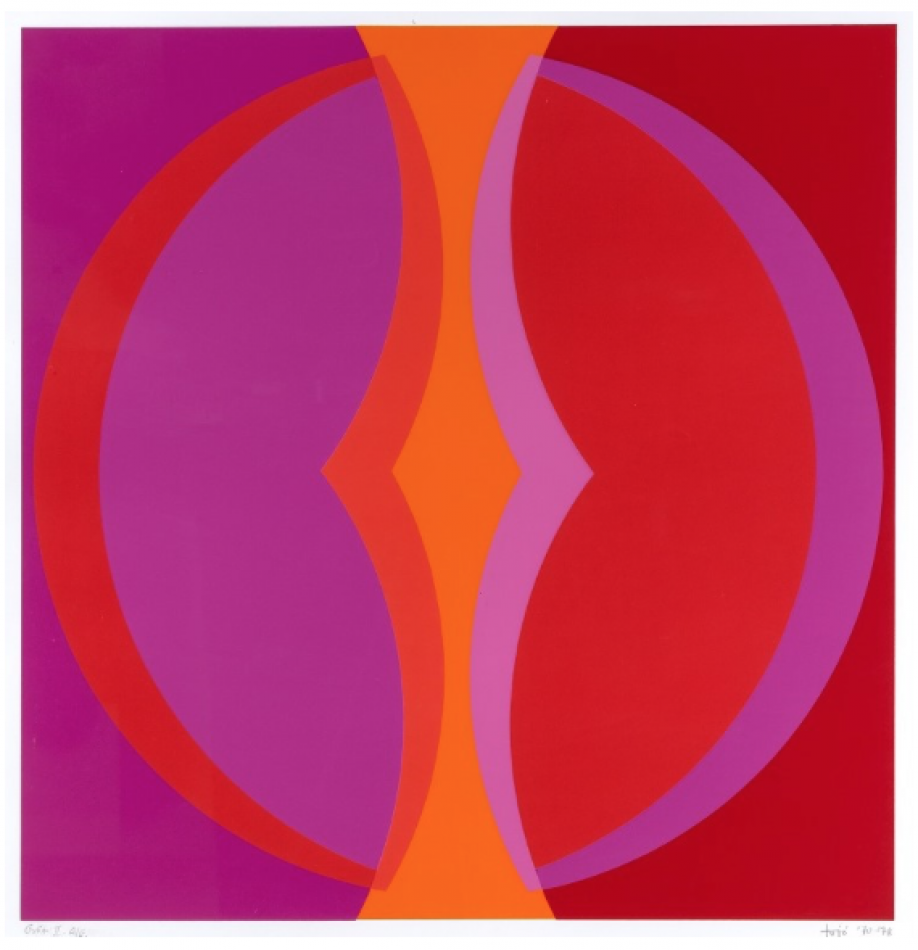|
The Erika Deák Gallery is excited to exhibit the silkscreen prints of Hungarian artist legend, JÁNOS FAJÓ (1937-2018).
János Fajó’s multicolored, sensual experiments with shapes and geometry lasted upon in the means of graphic works, screen prints, paintings, wall objects and sculptures. The first posthumous exhibition of the Munkácsy and Kossuth Award winning artist is presently on view at the Ybl Buda Creative House, that displays a thematic selection of the artist’s oeuvre, while the Erika Deák Gallery will feature the most emblematic pieces of the artist’s silkscreen prints made between 1971 and 1989.
One key relevance of our exhibition is that the medium of silkscreen and other multiple series has received moderate attention in the hierarchy of Hungarian art genres. There is hardly any interest in multiples on the Hungarian art scene and market, while the historical role of the medium seems to be gaining more prominence, in its democratizing contribution to contemporary design and poster movements.
In the 1960s, new, reproductive methods appeared in arts, and the technique of silkscreen printing began to play an increasing role. Although it was developed in the 1900’s and primarily used in industrial fields, the technique became popularized by American pop artists, such as Andy Warhol, Roy Lichtenstein or Robert Rauschenberg. Silkscreen became a popular medium for artists, it democratized art, and made it available for everyone, at a low cost. The technology soon arrived to Hungary and gained importance in local graphic biennales and art festivals.
Fajó, as one of the founding members, was very active in the legendary Pesti Műhely group (Budapest Workshop). It was a creative community of neoavantgarde artists since 1971, making silkscreens in their own studio from 1971. The founding members were for various periods: Imre Bak, István Nádler, János Fajó, Ilona Keserü, Tamás Hencze and András Mengyán. They were all geometric and abstract artists, which was not the favorite art of the prevailing political system. Beside art making, they wanted to create bridges between their own conception of art and the older masters. The workshop also cooperated with other artists, free schools and summer symposiums, while its members created an alternative gallery system to become more democratic and international.
Unlike the until then preferred black and white reproductive technologies, silkscreen printing offered a new alternative in achieving the same color intensity as with acrylic or oil paint. János Fajó was fascinated by this technique that offered him new, boundless creative possibilities, more freedom, than what painting and sculpture could offer to a free spirited, rebellious artist in the politically regulated 1970’s. Silkscreen didn’t only become his medium of experimenting, but a form of resistance, a tool of communication with fellow local and international artists.
Fajó often examined his most liked motifs in several mediums, the ladyfinger, the Kopernik shape and other emblematic motifs appear on his silkscreens, paintings and even sculptures. He enjoyed playing with the shapes, the colors and the spaces, he liked the complexity of what they could become in variations. Looking at his oeuvre, we might ask, what came first, the painting or the silkscreen? Silkscreen was often the base, the preliminary experiment with colors and motifs, an important step in the making of a painting. Only he knew why some silkscreens remained in their original medium, and why some variations became paintings. From this rich oeuvre we selected a tiny slice, we’ll exhibit some of the most vibrant, lushly colored and entwining motifs, some of Fajó’s most emblematic silkscreens.
For more information please contact the gallery.
|

